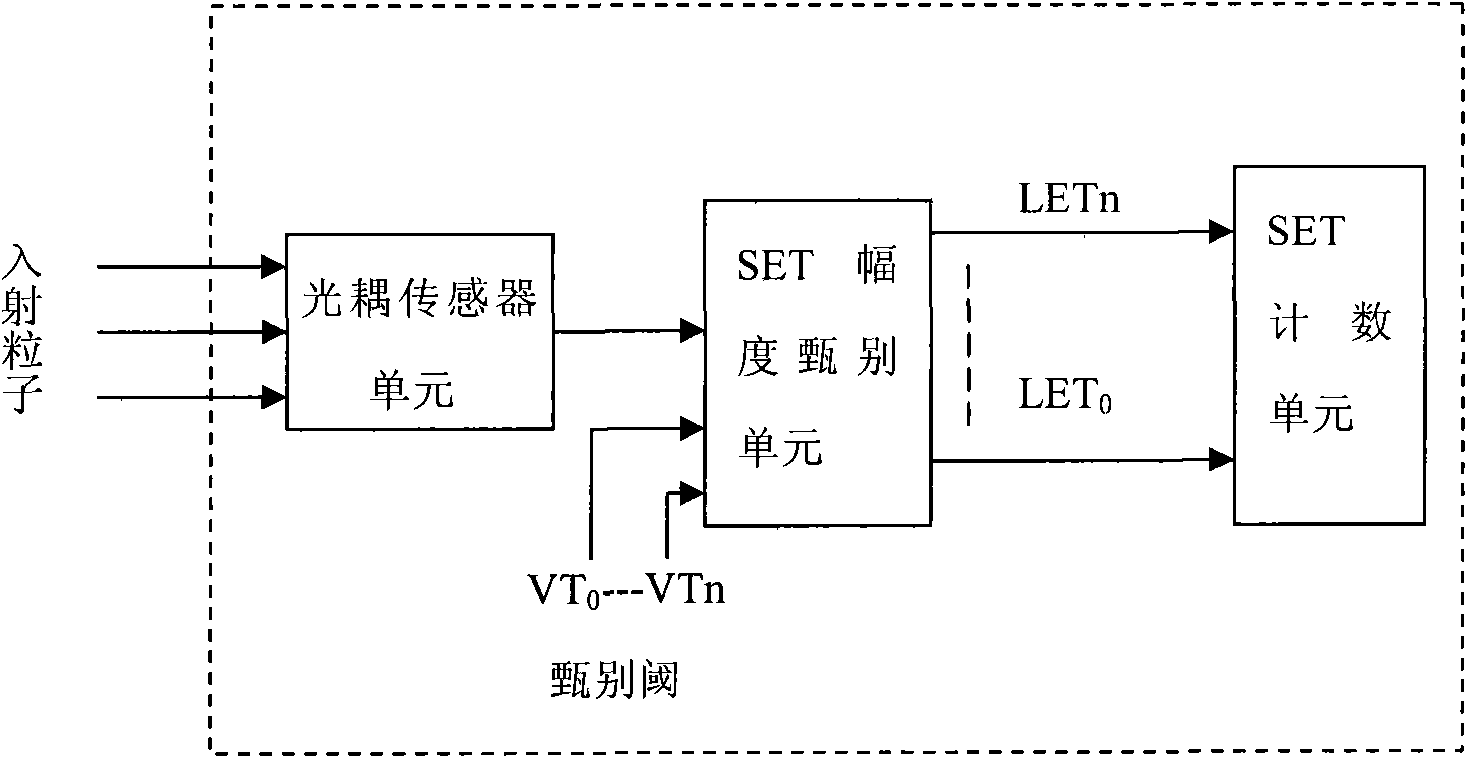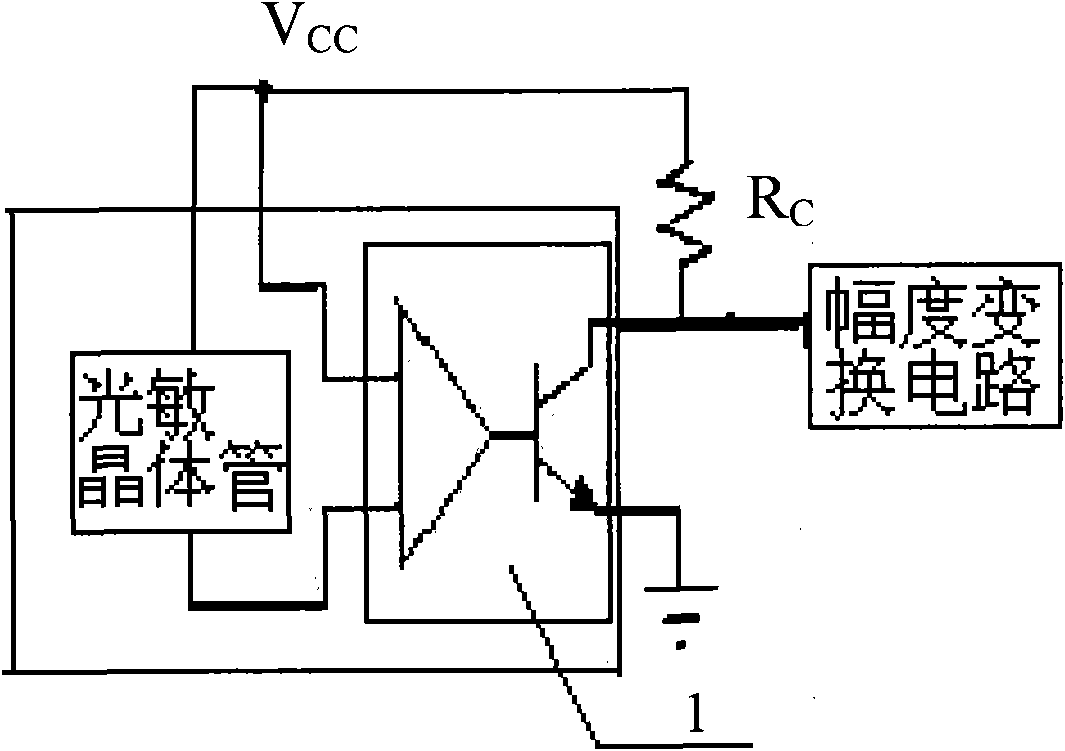Single-event effect detection device and method
A single-event effect and detection device technology, applied in the field of space radiation effect detection, can solve the problems of high quality, volume, power consumption of detectors, thick effective thickness of semiconductor detectors, and inaccurate measurement of heavy ions, etc. effect of low power consumption and wide measurement range
- Summary
- Abstract
- Description
- Claims
- Application Information
AI Technical Summary
Problems solved by technology
Method used
Image
Examples
Embodiment Construction
[0036] The present invention will be further described in detail below in conjunction with the accompanying drawings and specific embodiments.
[0037]The single event effect that occurs in optoelectronic devices and analog devices is manifested by the fact that after the sensitive parts of these devices are hit by a single particle, an abnormal output pulse is generated at the output of the device, which is called a single event transient pulse (Single Event Transient, SET) effect. Utilizing the single event transient pulse effect, the present invention proposes a single event effect detection device and method based on a single event transient pulse (SET) of a photoelectric coupling device (optocoupler for short). In this embodiment, by measuring the SET analog signal generated by a single high-energy particle bombarding the optocoupler in the radiation environment, according to the correlation between the amplitude of the SET and the LET value of the incident particle, the ...
PUM
 Login to View More
Login to View More Abstract
Description
Claims
Application Information
 Login to View More
Login to View More - R&D
- Intellectual Property
- Life Sciences
- Materials
- Tech Scout
- Unparalleled Data Quality
- Higher Quality Content
- 60% Fewer Hallucinations
Browse by: Latest US Patents, China's latest patents, Technical Efficacy Thesaurus, Application Domain, Technology Topic, Popular Technical Reports.
© 2025 PatSnap. All rights reserved.Legal|Privacy policy|Modern Slavery Act Transparency Statement|Sitemap|About US| Contact US: help@patsnap.com



